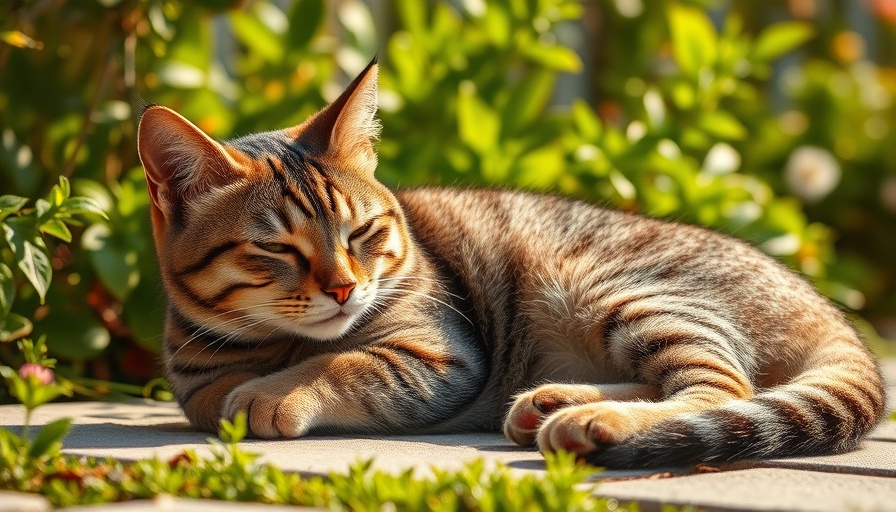
Introducing the Adventures of Milly: A Feline's Life in Devonvale
Welcome back to the delightful story of Milly, the little furball with a big personality, who has fully embraced her role in the picturesque village of Devonvale. In the latest chapter of her adventures, we dive into how her curious nature has transformed her quiet suburban surroundings into her personal playground, filled with magic, mischief, and the occasional hunt.
The Essence of Freedom: From Indoors to Outdoors
After her move to the serene golf course, Milly has quickly learned the joys of outdoor exploration. The transition from indoor cat to outdoor adventurer has not only enriched her life but also strengthened the bond between Milly and her human companions. Isabel shares how she and her family navigated this newfound freedom and the adorable moments that brought joy along the way.
From her very first solo outdoor excursions to friendly off-leash strolls, Milly has taken every opportunity to investigate the sights and sounds of her golf course habitat. Picturesque sunsets serve as backdrops for their family picnics after golf hours, fostering cherished memories while deepening their connection with nature. It's these innocent little moments that echo the beauty of life shared, highlighting the importance of environment and companionship in a pet's well-being.
Milly: The Miniature Hunting Machine
With the grace of a trained ninja, Milly has shown remarkable prowess in her hunting instincts. Every fluttering moth or unwelcome bug is an opportunity for her to show off her talents, proving that even the smallest of felines can possess impressive skills. As her family joyfully embraces her mischievous side, they also remain mindful of the impact of her hunting activities on local wildlife.
Isabel candidly discusses the balance between allowing Milly to explore her instincts while being conscious of the environment. It’s a discussion relevant to all pet parents, and finding solutions—whether it be creating safe play zones or implementing protective accessories—will resonate well with veterinarians, pet care advocates, and pet parents alike.
A Serene Evening Unwind: Practice Mindfulness with Pets
After long days filled with playful adventures, peaceful evenings in Devonvale have become a treasured routine. As the golfers pack up, the golf course transforms into a cozy haven for Milly and her family. Sunset picnics become rituals of gratitude and relaxation, bringing mindfulness into their lives. These serene moments remind us that pets aren't just animals; they're companions that enrich our adult lives.
Integrating mindfulness practices with pet ownership not only benefits our furry friends but enhances mental health for the humans too. As Milly rolls in the grass, interacts blissfully with her family, and indulges in what life offers, it's a gentle reminder that joy lies in the small moments that we often take for granted.
Practical Tips for Pet Parents: Creating Safe Outdoor Experiences
For many pet owners, the allure of allowing cats outdoor experiences evokes varying emotions. Here are actionable insights into creating a safe environment for cats like Milly while allowing them the freedom they crave:
- Establish Defined Boundaries: Consider building a catio or using leashes designed for cat adventures. This provides protection for your feline while granting them exploration opportunities.
- Engage Local Wildlife Advocates: Connect with wildlife rescue organizations to understand the ecological impact of your pet's outdoor habits.
- Invest in Engaging Toys: Consider interactive toys that mimic hunting behaviors, so cats can practice their predatory instincts safely indoors.
Celebrating Cats: What Milly Teaches Us About Living Fully
Milly’s adventures are a beautiful testament to celebrating life in all its chaos and beauty. The stories of her playfulness, curiosity, and also the care taken for wildlife resonates deeply with cat-loving readers. Whether you're a veterinarian or a pet accessory developer, Milly's tale encourages a collaborative approach to pet care that prioritizes the happiness of pets while honoring the ecosystem they inhabit.
As we continue to share Milly’s journey, we invite you to reflect on how animals of all types contribute to our quality of life. Let their playful innocence inspire you to create memorable experiences for your pets, nurturing both their curiosity and our environment.
Join the Conversation: Share Your Pet's Adventures
The stories of our furry friends connect us beyond words. How do you create memorable experiences with your pets? Share your experiences and tips in the comments or join local events that advocate for pet care excellence. Every experience shared serves to inspire others in this furry community! Let's celebrate the joy our pets bring into our lives.
 Add Row
Add Row  Add
Add 




Write A Comment